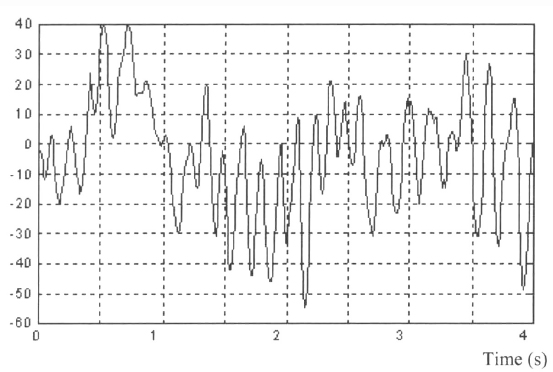1.2. Signals: categories, representations and characterizations
1.2.1. Definition of continuous-time and discrete-time signals
The function of a signal is to serve as a medium for information. It is a representation of the variations of a physical variable.
A signal can be measured by a sensor, then analyzed to describe a physical phenomenon. This is the situation of a tension taken to the limits of a resistance in order to verify the correct functioning of an electronic board, as well as, to cite one example, speech signals that describe air pressure fluctuations perceived by the human ear.
Generally, a signal is a function of time. There are two kinds of signals: continuous and discrete-time.
A continuous-time or analog signal can be measured at certain instants. This means physical phenomena create, for the most part, continuous-time signals.

Figure 1.1. Example of the sleep spindles of an electroencephalogram (EEG) signal
The advancement of computer-based techniques at the end of the 20th century led to the development of digital methods for information processing. The capacity to change analog signals to digital signals has meant a continual improvement in processing devices in many application fields. The most significant example of this is in the field of telecommunications, especially in cell phones and digital televisions. The digital representation of signals has led to ...
Get Digital Filters Design for Signal and Image Processing now with the O’Reilly learning platform.
O’Reilly members experience books, live events, courses curated by job role, and more from O’Reilly and nearly 200 top publishers.

